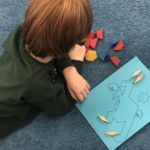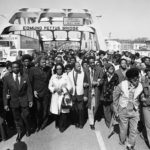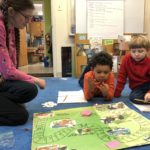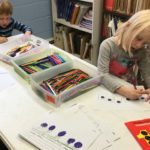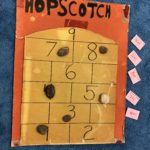Learning to read word problems for young children has many aspects. We began with the four children by having them recognize possible, impossible or incorrect number sentences such as: ? + 5 = 7, 7= 5+?, or 5+3 = 7 or 7+2=5. This was often tricky and took a while for kids to see that Read More >>
Geometry
In the middle of November a few students began a Geometry Unit. The goal of this unit was for students to be able to identify a variety of shapes and be able to count their sides and vertices. We primarily worked with shapes with 3-6 sides. All students excelled in this, and were even able Read More >>
Geometry
During the fall of 2020 our youngest students all studied shapes! Throughout their unit of study, they would be taking a close look at 12 different shapes, comparing some of the differences between them and identifying them and even searching for them throughout the school. To begin our unit, we introduced the shapes to the Read More >>
Systemic Racism
Our children, our students, live in a world that has developed all kinds of media and ways to transmit information, disinformation, ideas, and images. They hear the media, adults, other peers talking about events and opinions as they move through their days. Some of these ideas are exciting and innovative, others are darker and disturbing. Read More >>
Teaching and Learning through Games
Why do we play games? What do they accomplish for teaching and learning? We have games for math, language arts, social studies, science and strategy. We have games for inside and outside. We have cooperative and competitive games. We have games we buy and we have many more games teachers and children have made. As Read More >>
Spectra: Energetic Escape!
Students enjoyed four activities that explored friction, kinetic and potential energy and how energy is transferred. In each experiment students considered a key question and after setting up an experiment they collected data. The data was graphed and analyzed. In Fiction Fun they considered what affects the force of friction. Here students set up an Read More >>
Math Centers for Kindergarteners
Over the last few months the Kindergarten students explored counting, coins (pennies, nickels and dimes), measurement using standard units, and adding and subtracting using games and their workbooks. Students compared lengths of object using a ruler. They used a balance where they compared the weight of various objects using non standard and standard units. For Read More >>
Ten Black Dots
The Kindergartners listened to the book Ten Black Dots by Donald Crews. After reading, counting dots and discussing each page, students have been working on making their own Ten Blue Dots Book. During each class, students get to work on a page or two by drawing their picture with the dots, copying some words off Read More >>
1 + 6 = 7 Centers
Every day the Kindergarten students play games to practice their math skills. These games are played with a teacher or an older student. Children have been working on a number of skills including addition to ten. To practice these skills they have played games like Make 5 Bingo, Ten’s Go Fish, Six of a Kind Read More >>
Graphing Centers
In Math class, our youngest students have been working on developing and reading pictographs and bar graphs. We made several graphs from scratch and analyzed existing graphs. This helps the students to identify things like the most, the least and things that have the same amount. They learned significant new terms such as data, key and Read More >>
- 1
- 2
- 3
- …
- 6
- Next Page »

